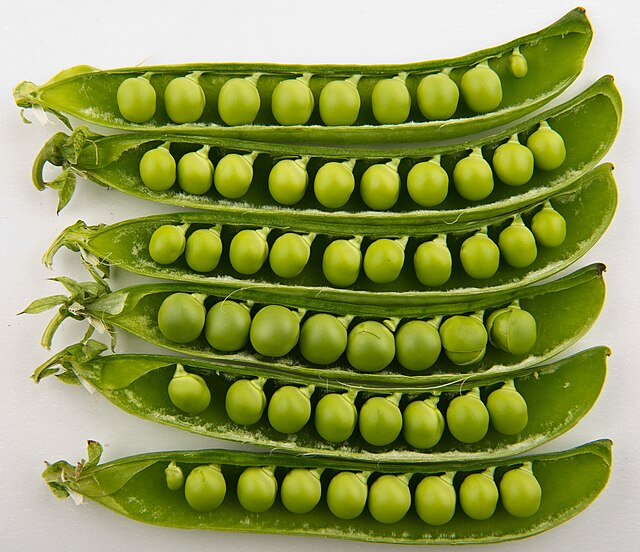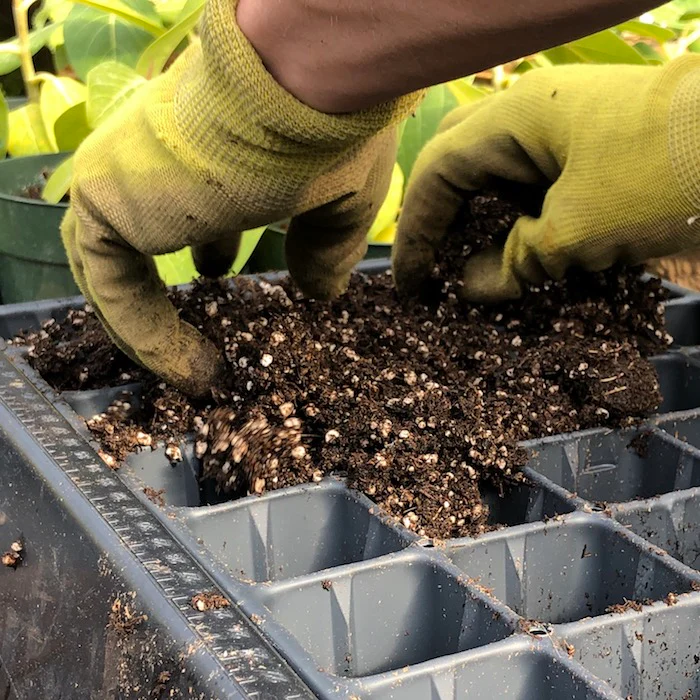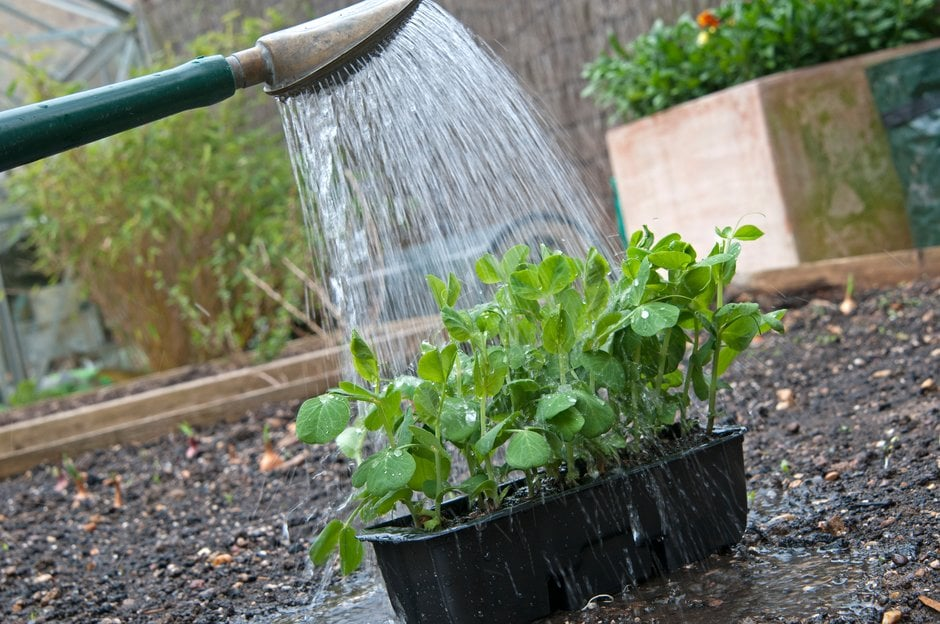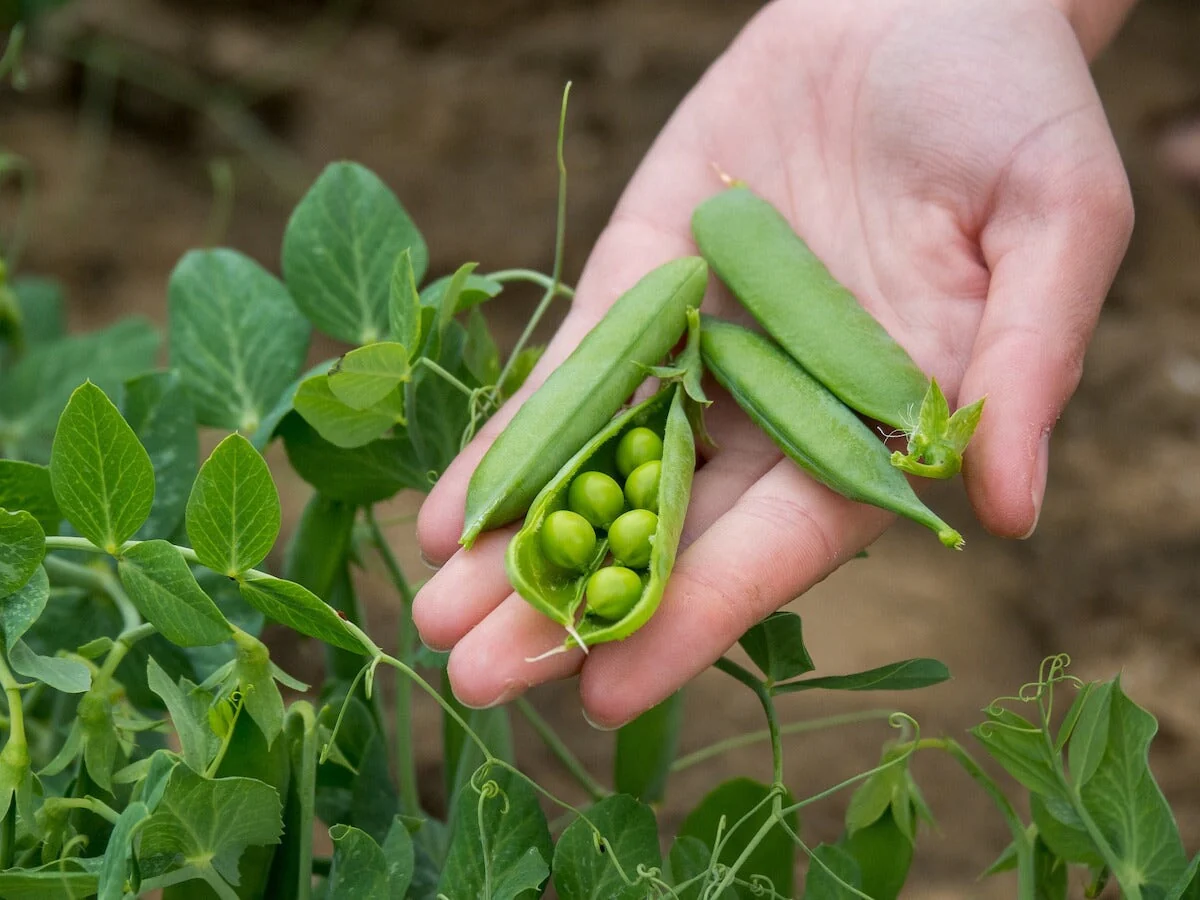Nothing compares to the fresh, sweet taste of peas just picked from the garden. If you’re interested in growing your own peas, this guide will take you through the entire process—from sowing to harvest. Whether you want peas for shelling or varieties with edible pods like snow peas or snap peas, you’ll find the right methods for successful cultivation.
Types of Peas
Peas come in several varieties, each suited to different needs. For shelling, there are traditional garden peas, while for edible pods, snow peas (with thin, flat pods) and snap peas (with thicker, rounded pods) are excellent choices.
Peas are classified into early and maincrop varieties. Early varieties mature within about three months, while maincrop types take up to four months. Plant height varies too, with dwarf varieties reaching 1.5-3 feet (45-90 cm) and climbing peas growing as tall as 6 feet (2 meters) or more.

Sowing Peas
Peas are best sown in plug trays, especially in climates with cold winters. Fill the trays with an all-purpose potting mix, ensuring it’s packed well. Create small depressions in the mix, drop in two pea seeds per cell, and cover them. Water thoroughly to ensure the mix is moist.
Sow peas anytime from late winter through early summer. In warmer regions, autumn sowing avoids the extreme summer heat, allowing peas to thrive. To prevent damage from pea moths, sow peas early in the season to avoid their active flying period.

Instead of plug trays, you can use wide, flat trays or even old lengths of guttering to start peas. This allows you to grow pea shoots for an additional harvest before transplanting the seedlings into their final positions.
Direct sowing into the garden is also an option once the soil warms up. Choose a sunny, well-drained spot, dig a shallow trench about 2 inches (5 cm) deep, and space the seeds 2-3 inches (5-7 cm) apart. Cover and water as needed.
Planting and Supporting Peas
Before transplanting, harden off seedlings to prepare them for outdoor conditions. When planting, space peas about 3 inches (7 cm) apart in rows, ensuring adequate sunlight for all plants.
Peas need support as they grow. Use netting or wire mesh, which they will cling to with their tendrils. For taller varieties, create an A-frame using bamboo canes and horizontal twine lines for added support. Avoid root damage by carefully transplanting seedlings, especially if they were grown in trays.
Caring for Peas
Peas grow quickly, so it’s important to keep the soil consistently moist, particularly once they start flowering. Regular watering helps maintain healthy growth and prevents issues like powdery mildew. Check soil moisture by inserting your finger about an inch (2-3 cm) into the soil. If it’s dry, water the base of the plants. Additionally, keep an eye on weeds and remove them promptly.

Harvesting Peas
The best time to harvest peas is when you can feel the peas through the pods. For the sweetest flavor, pick peas when they’re small. Larger peas will yield more, but they might be less sweet. Snow peas, mangetout, and snap peas can be harvested when they reach about 3 inches (7 cm) in length.
To encourage continued production, pick regularly. A steady harvest can last up to three weeks. Enjoy peas fresh for the best flavor, but if you need to store them, refrigerate un-shelled peas in the salad compartment. Alternatively, blanch peas for one minute in boiling water, then chill, dry, and freeze them for later use.
With these tips, you’ll be able to enjoy your homegrown peas from the first sowing to the final harvest.
